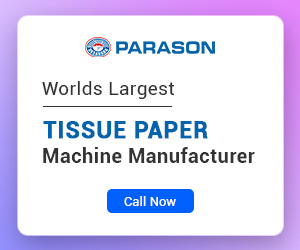Introduction
The role of digester in the pulp and paper industry is very important. It is used to cook the raw material wood chips with chemical solutions to break down lignin and extract cellulose fibers. This process is important to produce pulp which is later processed into paper.
Basically, a digester is a large pressurized vessel, where the cooking of wood chips occurs. There are different types of digesters used in the industry, each offering distinct advantages based on production requirements and efficiency. In this blog, we will see the types and the role of digesters in the pulp and paper industry.
What is a Pulp Digester?
A pulp digester is a specialized equipment that is used in the chemical pulping process. It exposes wood chips to high temperatures and chemical solutions like sodium hydroxide and sodium sulfide (in Kraft process), to dissolve lignin and separate cellulose fiber. This chemical cooking process determines the quality and properties of the final pulp. It eventually affects the quality and strength of the final product as well.
Types of Pulp Digesters
There are two major types of digestor in the pulp and paper industry based on the process, the batch digester and the continuous digester.
1. Batch Digester
The batch digester operates in cycles. It processes one batch of wood chips at a time. This requires loading and unloading after each cycle. The batch digester is suitable for smaller-scale pulp production.
2. Continuous Digester
Unlike the batch digester, a continuous digestor is used to feed wood chips continuously for uninterrupted cooking. This ensures consistent pulp production with higher efficiency. A continuous digester in the pulp and paper industry is suitable for large-scale industrial operations.
Types of Cooking Equipment in Pulp Production
There are several types of digester in the pulp and paper industry as cooking equipment. These types are used in the pulp industry based on production capacity and efficiency.
1. Continuous Tubular Digester
- A vertical, high-pressure vessel used for continuous pulp cooking.
- Utilizes high-temperature steam for chemical decomposition and bleaching.
- Suitable for large-scale production with high efficiency.
2. Vertical Pulp Digester
- Uses steam injection to cook wood fibers in a wood pulping process within a vertical chamber.
- Provides uniform heating and chemical treatment.
- Commonly used for medium to large-scale pulp production.
3. Rotary Pulp Digester
- Rotates the wood material inside a cylindrical container while applying steam.
- Ensures even heating and effective fiber separation.
- Preferred for smaller production lines due to its simple operation and maintenance.
Key Process Steps in Pulp Digestion
- Charging: Wood chips are loaded into the digester.
- Cooking: A chemical solution is introduced, and the mixture is heated under pressure.
- Blowing: Pressure is released, and the cooked pulp is discharged for further processing.
Advantages of Pulp Digesters
- Efficient Cooking & Bleaching: Converts wood raw materials into high-quality pulp.
- Precision Control: Advanced temperature and pressure regulation prevent fiber damage.
- Chemical Treatment: Enhances bleaching and fiber separation for superior pulp quality.
Market Trends and Industry Insights
The pulp equipment market is evolving with technological advancements and sustainability initiatives. Key trends include:
- Environmental Sustainability: Growing emphasis on eco-friendly and energy-efficient pulping methods.
- Digital Transformation: Integration of IoT, automation, and big data for improved efficiency.
- Rising Demand in Asia-Pacific: Expanding paper and packaging industries are driving demand for advanced pulp digesters.
- Industry Consolidation: Mergers and acquisitions are reshaping the competitive landscape, promoting large-scale operations.
Conclusion
Digester in the pulp and paper industry is vital, enabling efficient and sustainable pulp production. With advancements in technology and increased demand for high-quality paper products, the role of modern digesters continues to evolve. Companies investing in innovative, environmentally friendly digesters will gain a competitive edge in the global market. If you need more information or any customised equipment as per your production requirement, you can contact our team and we will guide you and get you the best offers for your pulp and paper machines.
By understanding the different types of digesters and their impact on pulp production, manufacturers can optimize efficiency, reduce environmental impact, and improve overall paper quality.

